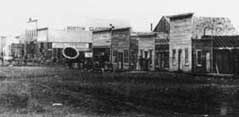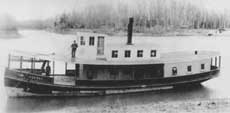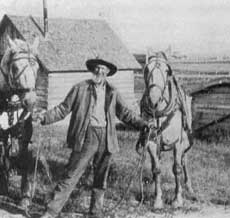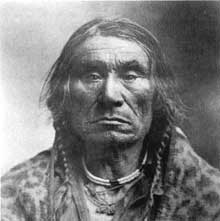|
Looking
Back:
A Pictorial History of the Flathead Valley
by Kathryn L. Mckay
Chapter
1
1800-1891
The Early
Years
Kootenai
Indians
and Other Tribes
Fur Trade and Establishment
of the Flathead Indian Reservation
Railroad and International
Boundary Surveys
Settlement and Agriculture
Transportation
Hunting and Trapping
Logging
|
 |
 |
| South side
of Gregg Street, Demersville, 1891. The long-gone town at the head
of steamboat navigation on the Flathead River boomed in 1890 and
1891 when people, materials, and machinery flowed into the community
while the Great Northern Railway was being constructed through the
Flathead Valley. |
Tom Carter
on the Flathead River near Demersville, circa 1891. The first
passenger vessel on Flathead Lake was a sailboat built in 1881.
The Tom Carter, launched in 1889, was built to handle increased
freight and passenger traffic due to incoming settlers and railroad
construction. |

|
 |
| Nick
Moon, circa 1895. A former placer miner, Moon arrived in the
Flathead Valley in 1879 and joined other stockmen raising cattle
at the head of Flathead Lake. Moon was the first to use irrigation
in the valley, and in the 1880s he provided vegetables to newcomers
from his homestead along today's Appleway Road west of Kalispell. |
Chief
Aneas Paul (also known as Big Knife or Ignace). Aneas was born in
1828 and served as chief of the Elmo-Dayton band of Kootenai from
1870 to 1900. His Iriquois father had been hired by David Thompson
of the Northwest Company in 1811 to help Thompson explore Kootenai
country. |
|



